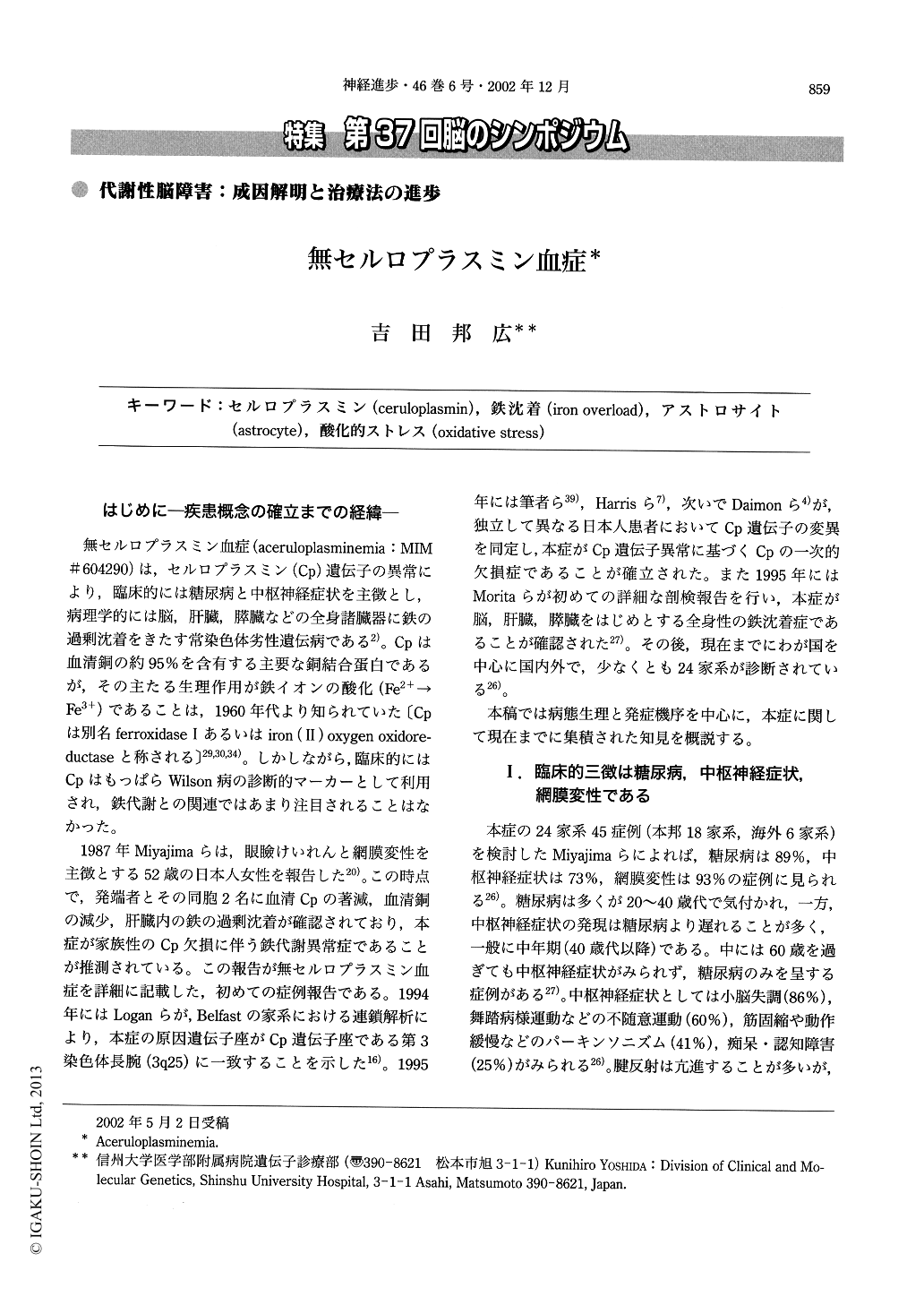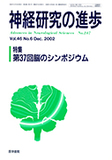Japanese
English
- 有料閲覧
- Abstract 文献概要
- 1ページ目 Look Inside
はじめに―疾患概念の確立までの経緯
無セルロプラスミン血症(aceruloplasminemia:MIM#604290)は,セルロプラスミン(Cp)遺伝子の異常により,臨床的には糖尿病と中枢神経症状を主徴とし,病理学的には脳,肝臓,膵臓などの全身諸臓器に鉄の過剰沈着をきたす常染色体劣性遺伝病である2)。Cpは血清銅の約95%を含有する主要な銅結合蛋白であるが,その主たる生理作用が鉄イオンの酸化(Fe2+→Fe3+)であることは,1960年代より知られていた〔Cpは別名ferroxidase Iあるいはiron (II) oxygen oxidoreductaseと称される〕29,30,34)。しかしながら,臨床的にはCpはもっぱらWilson病の診断的マーカーとして利用され,鉄代謝との関連ではあまり注目されることはなかった。
1987年Miyajimaらは,眼瞼けいれんと網膜変性を主徴とする52歳の日本人女性を報告した20)。この時点で,発端者とその同胞2名に血清Cpの著減,血清銅の減少,肝臓内の鉄の過剰沈着が確認されており,本症が家族性のCp欠損に伴う鉄代謝異常症であることが推測されている。
Aceruloplasminemia is an autosomal recessive disorder of iron metabolism caused by mutations in the ceruloplasmin (Cp) gene. It is clinically characterized by adult-onset diabetes mellitus, retinal degeneration, and neurological disorders. Microcytic and hypochromic anemia with low serum iron is frequently noted, while serum ferritin is increased and marked hemosiderosis is evident in the liver, pancreas, and brain. In the brain, the striatum and dentate nucleus are most severely affected, where heavy iron deposition and extensive loss of neurons are observed.

Copyright © 2002, Igaku-Shoin Ltd. All rights reserved.


